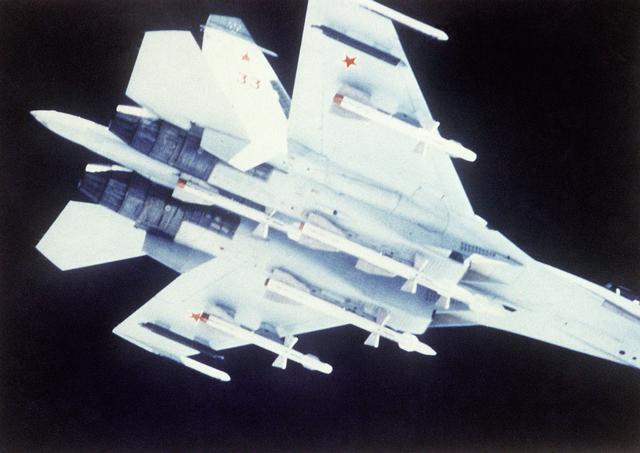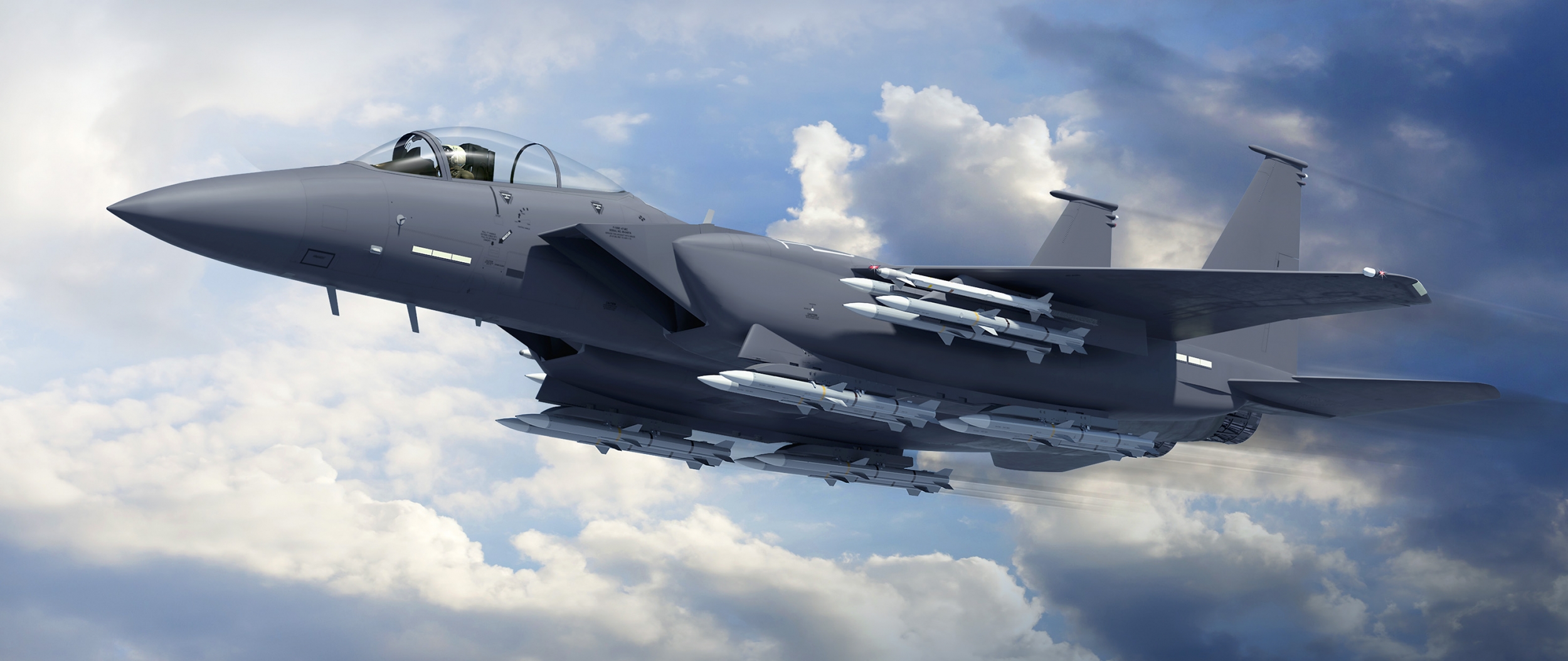تثبيت التطبيق
How to install the app on iOS
Follow along with the video below to see how to install our site as a web app on your home screen.
ملاحظة: This feature may not be available in some browsers.
أنت تستخدم أحد المتصفحات القديمة. قد لا يتم عرض هذا الموقع أو المواقع الأخرى بشكل صحيح.
يجب عليك ترقية متصفحك أو استخدام أحد المتصفحات البديلة.
يجب عليك ترقية متصفحك أو استخدام أحد المتصفحات البديلة.
لماذا تتفوق ال Su-35 على ال F-15؟
- بادئ الموضوع Alucard
- تاريخ البدء
في الحرب ... المنظومة الجوية تواجه المنظومة الجوية بكامل عناصرها الاداء الفردي والمقارنة الفردية غير صحيحة اطلاقا ليس قتال شوارع حتى اقول طائرة ضد طائرة يمكن ان تكون طائرة في دائها الفردي مرتفعة جدا لكن حينما تدخل في منظومة قتال جوي في حرب حقيقية تجدا ادائها تحت الصفر فتكون معيق ومصدر هزيمة ميزة الطائرات الغربية عن الروسية هي هذه ... العمل كمنظومة واحده وهذا مالا يمتلكه الروس وان ادعوا ذلك
فإنك شمس والملوك كواكب
إذا طلعت لم يبد منهن كوكب


أنا الموتُ الذي آتى عليكم // فليسَ لهاربٍ مني نجاءُ
استاذي الكريم دائما ما تتحدث بهذه الطريقة ليظن الجميع ان الفرق هائل بين الAESA و ال PESAالجزم بتفوق رادارها على AN/APG-82(v)1 هو محض خداع .. كلهم للاسف يستندون الى مسالة المدى فقط وينسون قدرات الرادار في التخفي من الانظمة السلبية وقدراته ضد التشويش الالكتروني ...
مع العلم ان مسالة المدى اصلا غير محسومة .. لانهم حينما يتحدثون عن مدى 350-400 كم ضد مقاتلات بمقطع 3م2 هو يتم فقط بنمط بحث ضيّق جدا .. المسالة ان اغلب رادارات AESA تستطيع عمل نفس الشيء بزيادة مدى الرادار والتركيز على نطاق بحث ضيّق ...
اما مسالة RCS فعن اي F-15 يتحدثون عنها بالضبطتوجد F-15C وتوجد F-15E والطرازات المتقدمة منها مثل F-15SA التي تم تخفيض مقطعها الراداري RCS
ولكن مسالة مقاومة التشويش متقاربة و حتى رادارات ال PESA تملك خاصية القفز على الترددات و مختلف الانماط التي يقوم بها ال AESA
رادارات الايجس الاولى كانت من نوع PESA و عملت بكفاءة عالية
رادار السوخوي 35 سيرصد الاف 15 من بعد 300 كيلومتلر بكفاءة ومناعة عالية ضد التشويش
استاذي الكريم دائما ما تتحدث بهذه الطريقة ليظن الجميع ان الفرق هائل بين الAESA و ال PESA
ولكن مسالة مقاومة التشويش متقاربة و حتى رادارات ال PESA تملك خاصية القفز على الترددات و مختلف الانماط التي يقوم بها ال AESA
رادارات الايجس الاولى كانت من نوع PESA و عملت بكفاءة عالية
رادار السوخوي 35 سيرصد الاف 15 من بعد 300 كيلومتلر بكفاءة ومناعة عالية ضد التشويش
أستاذي المسألة عن طريقة عمل الرادار نفسه وليس القدرات فحتى الرادات الميكانيكية القديمة تستطيع ان تقفز بالترددات ...
رادارات الـ AESA تمتلك عدد ضخم من الوحدات فحينما نتحدث هنا عن قفز ترددي يكون اثره عالي جدا... يمكن لرادارات اخرى ان تملك هذه القدرة؟ نعم لكن هل بكفاءة الـ AESA لا اعتقد...
وايضا حتى تنجح بالتشويش لابد من مقدرة انظمتك السلبية على التعرف على مصدر الاشارة ونوعيتها, رادارات الـ AESA تستخدم طاقة أقل بكفاءة اعلى مع العديد من الاجراءات التي تضمن عدم رصد اشارتها او على الاقل تصعيب عملية اعتراضها...
رادار IRBS-E جيد القدرات, لكنه يصدر طاقة عالية جدًا مما ينبه الانظمة السلبية ويسهل عملية التشويش ضده, اما الارقام لا اعرف بناء على ماذا لكن تخميني ان يعتمد على بعض التقديرات المفهومة بشكل خاطئ .. رادار الـ IRBS حتى يصل لهذا المستوى من القدرة يحتاج لتضييق نطاق البحث بدرجة كبيرة والاستمرار بطاقة عالية.. وحتى رادارات الـ AESA تملك انماط Cued Search لتزيد من مدى بحثها على نطاق ضيق ...
Zaslon radar system
The Russian (former USSR) BRLS-8B "Zaslon" is an all weather multimode airborne radar developed between 1975 and 1980 by the Tikhomirov Scientific Research Institute of Instrument Design as part of the weapons control system of the MiG-31 supersonic interceptor. The NATO codename for the radar is Flash Dance with the designations "SBI-16", "RP-31", "N007" and "S-800" also being associated with the radar.
Description
The Zaslon is a Pulse-Doppler radar with a passive electronically scanned array (PESA) antenna and digital signal processing. The antenna used by the Zaslon is actually a multi-channel system comprising two separate electronically controlled arrays, an X-band radar with 1700 emitters and a L-band transponder with 64 emitters brought together into a single antenna. The antenna has a diameter of 1.1 meters and is fixed in position with a scanning sector of +/-70 degrees in azimuth and +70/-60 degrees in elevation. The X-band components of the radar uses reciprocal ferrite phase shifters that allow the radar to position beams in around 1.2 msec [1]. This high performance is one of the big advantages of phased array radars compared with the previous generation of mechanically scanned arrays which take seconds to perform the same functions as a phased array. The detection performance of the Zaslon radar is stated to be 200 km against a target with a Radar cross section (RCS) of 16 m2, the radar can track up to 10 targets while engageing 4 of those at any one time with either R-33 radar guided or R-40, R-60 IR guided air to air missiles.
The radar was a landmark in aviation since it was the first time a PESA radar (previously found only on ground based systems or big bomber) had been installed in a jet fighter. The Zaslon radar was publicly unveiled at the 1991 Paris Airshow with its associated MiG-31 interceptor, the Russians even removing the radome of the fighter to allow the Zaslon's revolutionary antenna to be seen. Also at Paris was the US F-117 Nighthawk (revolutionary for its use of stealth technology) which the Russians suggested should take to the air with the MiG-31 to see if the Zaslon could detect the F-117. Unfortunately no such contest was ever conducted though Russian experts were confident that Zaslon would have been able to detect the F-117 during flight.
Zaslon uses an Argon-15A computer (first airborne digital computer designed in USSR by Research Institute of Computer Engineering (NICEVT, currently NII Argon)
حكاية تغيير رادار الاف 22 تردداته 1000 في الثانية امر تقوم به معظم الرادارات
رادار زاسلون السوفياتي من حقبة الثمانينات كان يستطيع تغيير تردداته كل 1.2 ميلي ثانية
اي حوالي 833 مرة في الثانية
The Russian (former USSR) BRLS-8B "Zaslon" is an all weather multimode airborne radar developed between 1975 and 1980 by the Tikhomirov Scientific Research Institute of Instrument Design as part of the weapons control system of the MiG-31 supersonic interceptor. The NATO codename for the radar is Flash Dance with the designations "SBI-16", "RP-31", "N007" and "S-800" also being associated with the radar.
Description
The Zaslon is a Pulse-Doppler radar with a passive electronically scanned array (PESA) antenna and digital signal processing. The antenna used by the Zaslon is actually a multi-channel system comprising two separate electronically controlled arrays, an X-band radar with 1700 emitters and a L-band transponder with 64 emitters brought together into a single antenna. The antenna has a diameter of 1.1 meters and is fixed in position with a scanning sector of +/-70 degrees in azimuth and +70/-60 degrees in elevation. The X-band components of the radar uses reciprocal ferrite phase shifters that allow the radar to position beams in around 1.2 msec [1]. This high performance is one of the big advantages of phased array radars compared with the previous generation of mechanically scanned arrays which take seconds to perform the same functions as a phased array. The detection performance of the Zaslon radar is stated to be 200 km against a target with a Radar cross section (RCS) of 16 m2, the radar can track up to 10 targets while engageing 4 of those at any one time with either R-33 radar guided or R-40, R-60 IR guided air to air missiles.
The radar was a landmark in aviation since it was the first time a PESA radar (previously found only on ground based systems or big bomber) had been installed in a jet fighter. The Zaslon radar was publicly unveiled at the 1991 Paris Airshow with its associated MiG-31 interceptor, the Russians even removing the radome of the fighter to allow the Zaslon's revolutionary antenna to be seen. Also at Paris was the US F-117 Nighthawk (revolutionary for its use of stealth technology) which the Russians suggested should take to the air with the MiG-31 to see if the Zaslon could detect the F-117. Unfortunately no such contest was ever conducted though Russian experts were confident that Zaslon would have been able to detect the F-117 during flight.
Zaslon uses an Argon-15A computer (first airborne digital computer designed in USSR by Research Institute of Computer Engineering (NICEVT, currently NII Argon)
حكاية تغيير رادار الاف 22 تردداته 1000 في الثانية امر تقوم به معظم الرادارات
رادار زاسلون السوفياتي من حقبة الثمانينات كان يستطيع تغيير تردداته كل 1.2 ميلي ثانية
اي حوالي 833 مرة في الثانية
بالعودة الى اسباب التفوق
في القتال البعيد افضلية نسبية للسوخوي 35 بسبب صاروخ R77M بمدى حوالي 200 كيلومتر بباحث ايسا
رادار يعمل بكفاءة كبيرة متقاربة مع الايسا
نظام تشويش متطور جدا هو خبيني ام
يتخوف الغرب جديا من عجز الامرام امام هذا النظام
اما في ال DOGFIGHT فالطائرات الامريكية فاشلة... حتى الاف 22
في القتال البعيد افضلية نسبية للسوخوي 35 بسبب صاروخ R77M بمدى حوالي 200 كيلومتر بباحث ايسا
رادار يعمل بكفاءة كبيرة متقاربة مع الايسا
نظام تشويش متطور جدا هو خبيني ام
يتخوف الغرب جديا من عجز الامرام امام هذا النظام
اما في ال DOGFIGHT فالطائرات الامريكية فاشلة... حتى الاف 22
المواضيع المشابهة
- الردود
- 4
- المشاهدات
- 930
- الردود
- 9
- المشاهدات
- 1K
- الردود
- 30
- المشاهدات
- 3K

